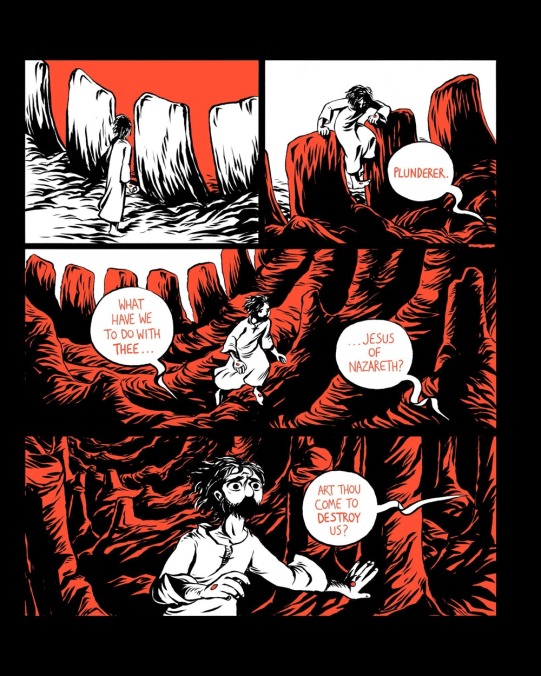The Harrowing of Hell is the rare Christian-themed comic deserving of universal attention

Comics dealing directly with Christian themes have been mostly relegated to Chick tracts and a lot of mockery. But Evan Dahm’s The Harrowing of Hell offers something completely new, an intimate and emotional exploration of Jesus’ life with a particular focus on the days between his crucifixion and resurrection. In the wrong hands, this subject could be either cloyingly worshipful or needlessly dismissive, but Dahm offers something deeply personal and full of profound ambiguity.
At first glance, The Harrowing of Hell seems like a sizable departure from Dahm’s previous work. Rice Boy, Island Book, Vattu, and Order of Tales all have fantasy settings and deep world-building, with large casts of characters. But The Harrowing of Hell is a story of one man’s struggle with his own identity, his legacy, and the expectations of the people around him, and that’s a theme that tracks through Dahm’s other comics. The fact that it’s Jesus at the center of this story is important—it provides context for the readers and roots the book in something just short of universal. But there’s an element of the hero’s journey here, something that reaches beyond the specifics of Jesus’ story and makes it accessible for readers who don’t have any personal relationship with Christianity.
Dialogue is minimal throughout the book, which allows Dahm’s art to step to the forefront. His other comics often star characters that are structured similarly to humans, bipedal and in a variety of sizes, so The Harrowing of Hell has a notable difference in that regard: Jesus is drawn small on the page and in comparison to the things around him—the ships, the temple, and the stones that make up the caves he travels through. He is vulnerable and often isolated in space, but usually framed as if the reader is looking down on him. It’s a real departure from the way Jesus is usually portrayed in religious art, and it makes him feel very human. His beard and hair are dark, his face is round, and he appears disheveled and often genuinely alarmed. There’s no deity here, just a man carrying more weight than he thinks he can handle.
Dahm’s art, which is fluid and stark with black and white, is well served by a very limited color palette. Scenes from Jesus’s life unfold out of chronological order, and at first red is used relatively sparingly and only appears on the Romans. But after crucifixion, and as Jesus struggles to the next phase of his life, he becomes surrounded by red; and the character himself, panicked and small, is the only splash of white. He’s confronted with threats of violence and promises of impotence. It’s a stressful and emotional journey through literal hell, and while the reader knows how the story ends, Jesus’s uncertainty and fear feel visceral. The line between fleeing from something frightening and running towards an unknown future can be a fine one, and it’s unclear which Jesus is doing.
It’s easy for any story about religion generally, but Jesus specifically, to become centered around evangelizing and preaching. But Dahm has created an emotional and raw comic about a man full of doubt and certainty in equal measure, struggling and fearful but dogged in his pursuit of what he thinks is next. He faces down injustice and disbelief, and keeps pushing himself forward. That would likely resonate with readers at any time, but in in this particular moment it feels powerful and weighty. The Harrowing of Hell focuses on struggle rather than inevitability, and is all the more compelling for it.
